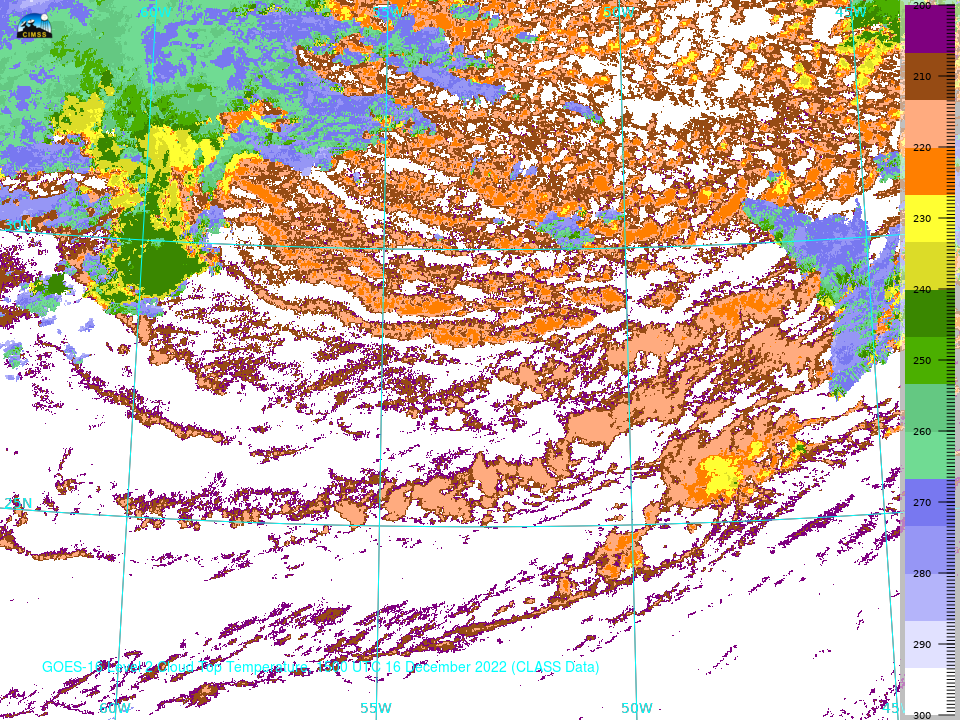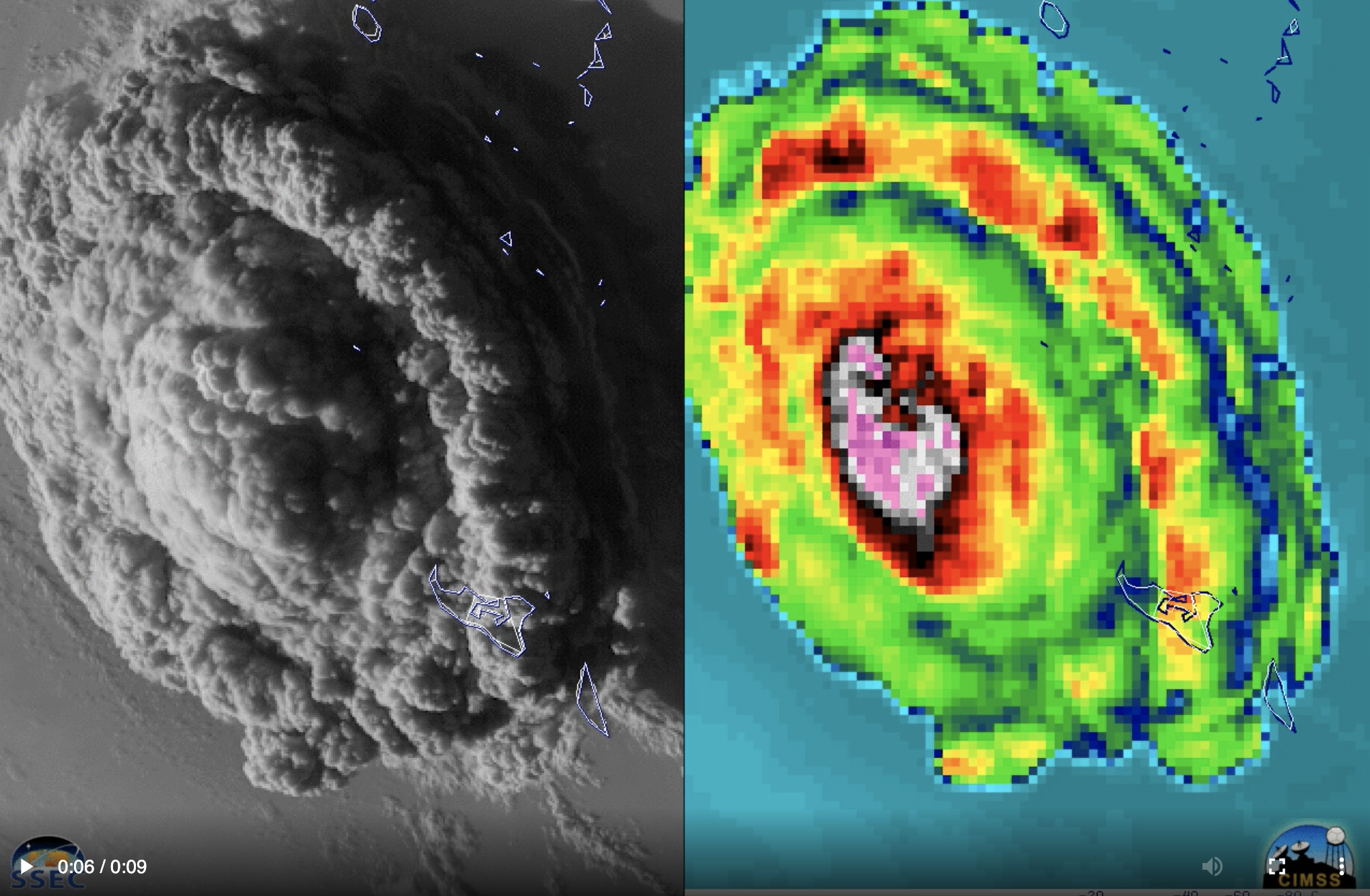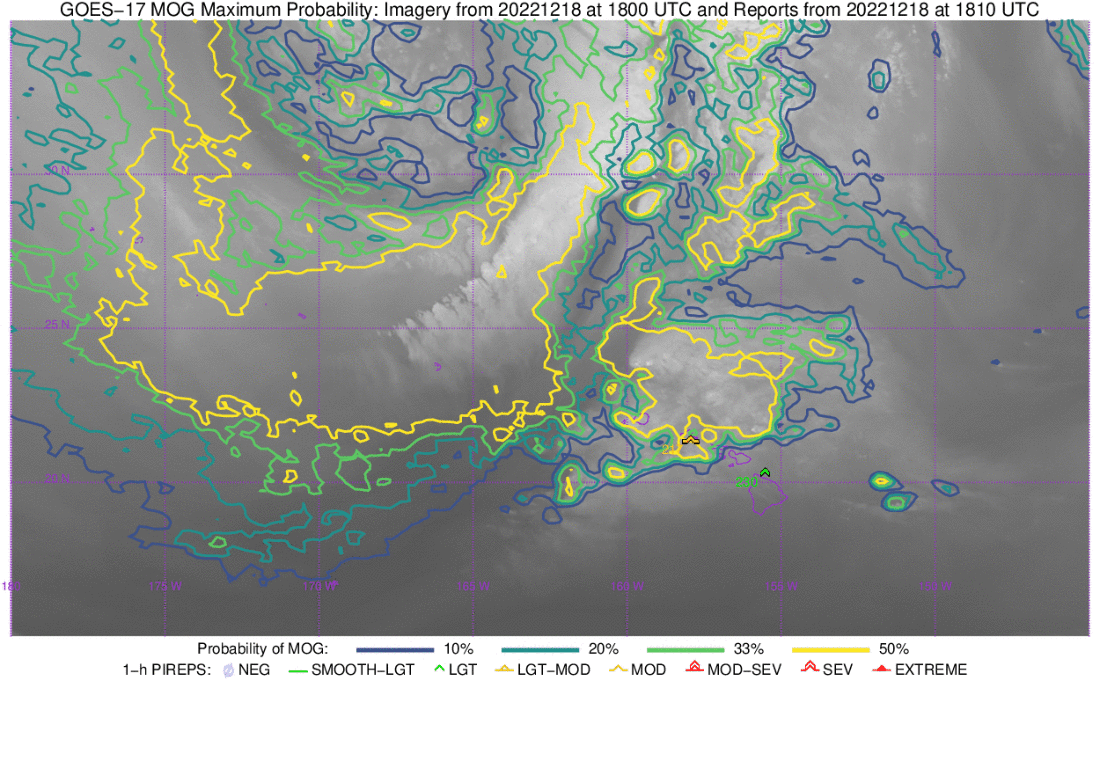
[ Archive ]

 |
CIMSS-NOAA Weekly Report [ Archive ] |
 |
CIMSS AND ASPB WEEKLY HIGHLIGHTS FOR THE WEEK ENDING DECEMBER 23, 2022
DATA, INFORMATION, AND USE-INSPIRED SCIENCE:
CSPP Geo Software Released to Prepare Direct Broadcast Users for GOES-18 and Himawari-9 Transitions: Multiple software packages have been released in the last two months under the Community Satellite Processing Package for Geostationary Data (CSPP Geo). The releases add major new capabilities for direct broadcast users, including support for GOES-18 and Himawari-9 in preparation for the operationalization of those satellites. Highlights include 1) in the Geo2Grid high quality imagery package, added support for GOES-18 Advanced Baseline Imager (ABI), GK2A Advanced Meteorological Imager (AMI), FY-4 Advanced Geostationary Radiation Imager (AGRI), as well as an initial set of GOES-R series cloud products and Gridded Geostationary Lightning Mapper (GLM) products; 2) in the Gridded GLM package, an initial version 1 production release with added support for GOES-18 and improved compatibility with Advanced Weather Interactive Processing System (AWIPS); 3) in the GEOCAT Level 2 products package, added support for Himawari-9 and migration to a new core software baseline; and 4) in the GRB (GOES-R series ingestor) package, a change to allow configuration for GOES-18 processing in advance of operationalization in the GOES-West stream. Updates have now been released for all CSPP Geo packages affected by the upcoming satellite transitions, which will allow direct broadcast users to continue processing data and generating products after the transitions. (G. Martin, CIMSS, K. Strabala, CIMSS, S. Lindstrom, CIMSS)
 (Click image to enlarge)
(Click image to enlarge)
Figure: GOES-16 ABI Cloud Top Temperature, plotted using Geo2Grid software (courtesy of CIMSS Satellite Blog).
FUTURE OUTLOOK:
AWARDS AND RECOGNITION:
TRAVEL AND MEETINGS:
ProbSevere presentation given at South American Nowcasting Webinar Series: John Cintineo of the Cooperative Institute for Meteorological Satellite Studies gave a presentation to the Brazilian Scientific Committee of Nowcasting regarding the machine-learning and artificial-intelligence methods in the ProbSevere product portfolio. ProbSevere includes nowcasting models for severe hail, severe wind, tornadoes, and lightning, leveraging the rich spatial and multispectral attributes of the GOES-R Advanced Baseline Imager and Geostationary Lightning Mapper instruments. The 1.5-hour seminar was the seventh installment of the webinar series, "Nowcasting Operations and Techniques: Perspectives for South America". Personnel from North and South American were present, representing several universities and government institutions, including Brazil's National Institute for Space Research (INPE). (J. Cintineo, CIMSS, 608-890-0619)
Participation of AGU fall meeting 2022: The American Geophysical Union (AGU) Fall Meeting 2022 was held in Chicago December 12-16, 2022. Yinghui Liu (STAR) participated this meeting and presented a talk titled "Cold-season Cloud Response to the Sea Ice Loss in the Arctic". (Y. Liu, E/RA2, 608-890-1893, yinghui.liu@noaa.gov)
TRAINING AND EDUCATION:
MEDIA INTERACTIONS AND REQUESTS:
SOCIAL MEDIA AND BLOG Posts:
SSEC and CIMSS Scientists in the News: Scientists at the University of Wisconsin-Madison (UW) Space Science and Engineering Center (SSEC) and the Cooperative Institute for Meteorological Satellite Studies (CIMSS) provide expert interviews, imagery and case studies to promote science. This week: 1) SSEC News published its year-in-review featuring a dozen top stories about research, education and engagement at SSEC and CIMSS. Read more: https://www.ssec.wisc.edu/news/articles/14954/. 2) CIMSS Satellite Blog contributors Tim Schmit, Scott Lindstrom and Scott Bachmeier published these case studies: "There GOES a Review of 2022" (Dec. 22), "2022: Solstice to Solstice" (Dec. 21), "Severe turbulence injures passengers near Hawai`i" (Dec. 21), "Kona Low affects Hawai`i" (Dec. 20) and "GOES-R Level 2 Products with geo2grid version 1.1" (Dec. 18). Read more at the CIMSS Satellite Blog: https://cimss.ssec.wisc.edu/satellite-blog/. (R. Pierce, SSEC, T. L'Ecuyer, CIMSS, E. Verbeten, SSEC, T. Schmit, E/RA2, 608-263-0291, tim.j.schmit@noaa.gov, S. Bachmeier, CIMSS, S. Lindstrom, CIMSS, J. Phillips, SSEC, 608-262-8164)
 (Click image to enlarge)
(Click image to enlarge)
Figure: GOES images showed the rapid expansion of a volcanic cloud following the eruption of Hunga Tonga on Jan. 15, 2022. It is one of 12 images highlighting GOES and Advanced Baseline Imager capabilities in 2022. Read more at the CIMSS Satellite Blog: https://cimss.ssec.wisc.edu/satellite-blog/archives/49198. Credit: CIMSS, NOAA.
 (Click image to enlarge)
(Click image to enlarge)
Figure: GOES-17 upper-level water vapor images, combined with contours of Moderate Or Greater (MOG) Turbulence Probability and Pilot Report plots of turbulence, showed an area of turbulence encountered by Hawaiian Airlines Flight 35 on Dec. 18, 2022 that injured 36 passengers and crew. Read more at the CIMSS Satellite Blog: https://cimss.ssec.wisc.edu/satellite-blog/archives/49370. Credit: CIMSS, NOAA.
PUBLICATIONS:
OTHER:
| Archived Weeklies Page | Submit a report item |